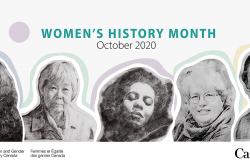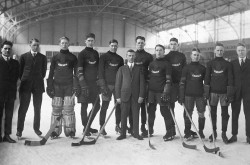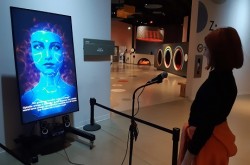Educational resources put 3D artifacts into the hands of Canadian students

A 3D scanner, a pair of hackers, and a whole lot of creativity is bringing a unique artifact from the Canada Science and Technology Museum to life in Canadian classrooms.
It all started last year, when a zoetrope – a pre-film animation device that produces the illusion of motion – was selected as one of several artifacts to be scanned for educational purposes.
“Our 3D scanner allows us to scan objects and share them in a virtual world – without having to ship the object,” explains Sandra Corbeil, director of strategic partnerships and networks at Ingenium – Canada’s Museums of Science and Innovation. “Our process is to pick an object, scan it, work with it in post-production, and then develop educational resources around it.”
However, the process of preparing the zoetrope wasn’t quite so simple.
“It’s beautiful looking, but it wasn’t ideal for the classroom,” says Lauren DiVito, a user experience specialist at Ingenium. “One of the problems with the zoetrope was it was really big and there’s a lot of materials in there.”
DiVito explains that a teacher using a 3D printer to print the museum’s original scan of the zoetrope would require a large amount of polymer – the material used to produce the physical pieces – which may not be an economical project for classrooms. The solution was to “hack” or modify the zoetrope design – resulting in a simplified zoetrope that’s ideal for classroom use.
“Hacking was about maintaining the functionality of the zoetrope, while reducing the amount of materials needed to print it in 3D,” says DiVito.
She explains that she and her colleague, Andrew McDonald – who both have experience in 3D modelling – sketched out a simplified design, then did the math to find the exact dimensions. After printing prototypes on the museum’s 3D printer, they tested them for functionality – and refined as required.
“We tried to keep in mind what materials are readily accessible for teachers,” says DiVito.
The zoetrope consists of two main pieces – a stand and a cylinder with vertical slits in the sides, which needs to be able to spin around in a circle. On the inner surface of the cylinder is a cardboard band, with images from a set of sequenced pictures. As the cylinder spins, the user looks through the slits at the pictures. DiVito says that she and McDonald were excited to find that a regular, ballpoint pen worked perfectly to connect the two main pieces.
“We realized that a pen would work really well, because everyone has them in the classroom and they’re a pretty standard size,” says DiVito. “We built the stand around the pen, so it would drop inside and hold it; the pen also has a little ballpoint that’s perfect for the stand to sit on.”
The 3D zoetrope files are now available for free download, along with educational resources for the classroom. Teachers can choose to download files for the original zoetrope or the modified version, to enable their class to build a functional zoetrope.
“The zoetrope is very accessible; teachers of very young students can use it,” says Corbeil. “Once it’s built, it’s a creative exercise.”
Corbeil explains that the printable strips – which are inserted into the zoetrope – can be printed off the website ready with images, or blank strips can be given to students to design from their own imaginations.
“You could show your students how to do a face – and have fun with changing the mouth to say words,” she suggests. “What we like about the overall 3D project is the opportunity to show creativity is a part of science, our collection is accessible, and to tell people a little bit about the artifacts.”
Corbeil suggests that teachers might combine building the zoetrope with a lesson about the optical illusion of persistence of vision to give the appearance of motion. An ArtiFactSheet – a fact sheet providing details on the artifact – also gives an interesting history of the invention of the zoetrope, and the subsequent development of more sophisticated animation devices.
































































